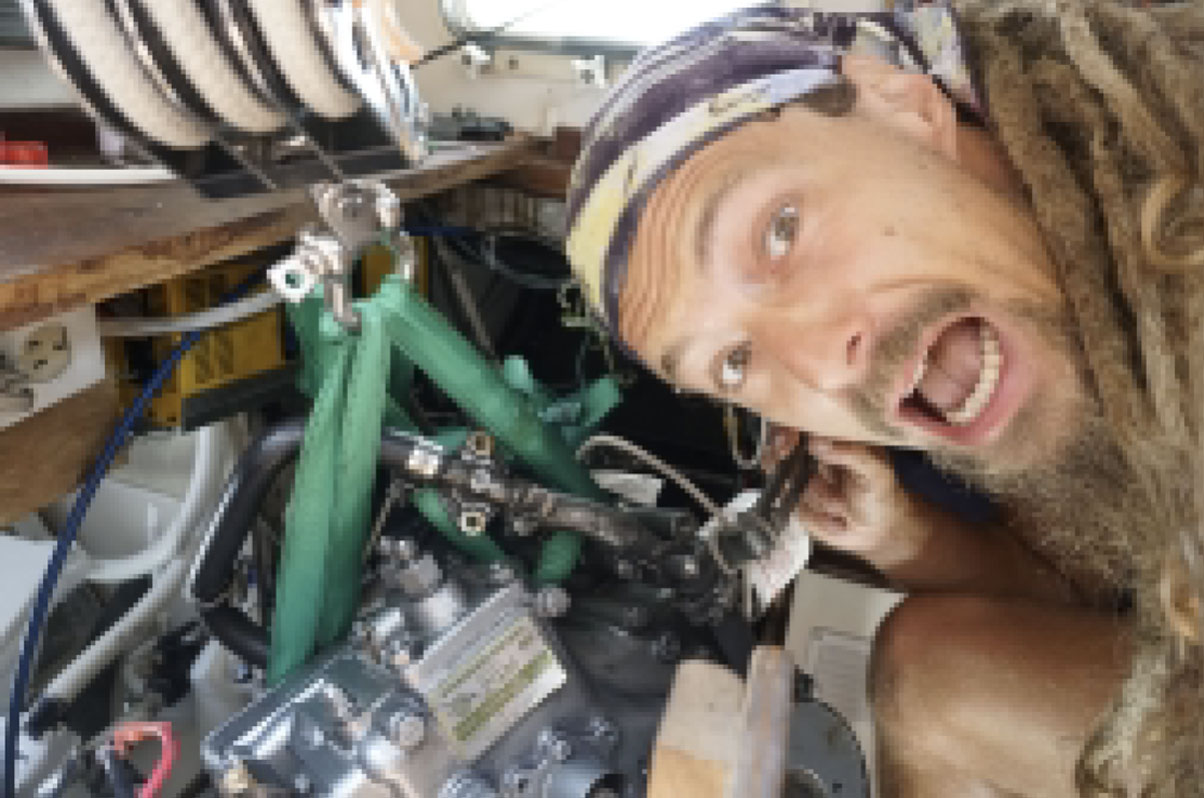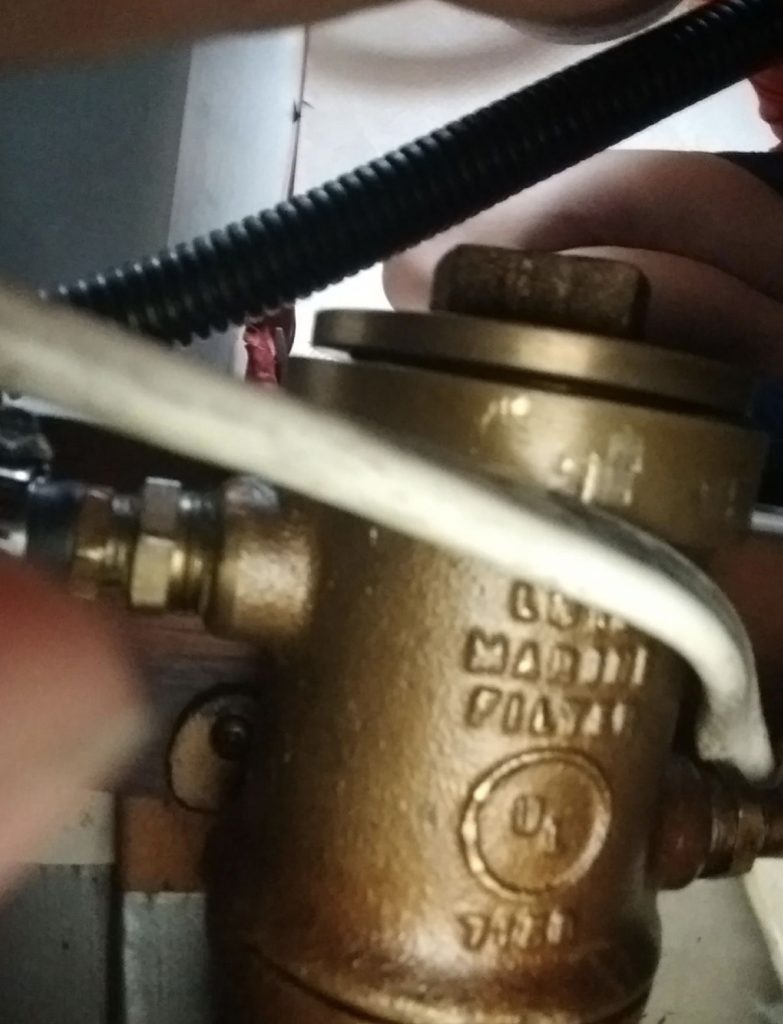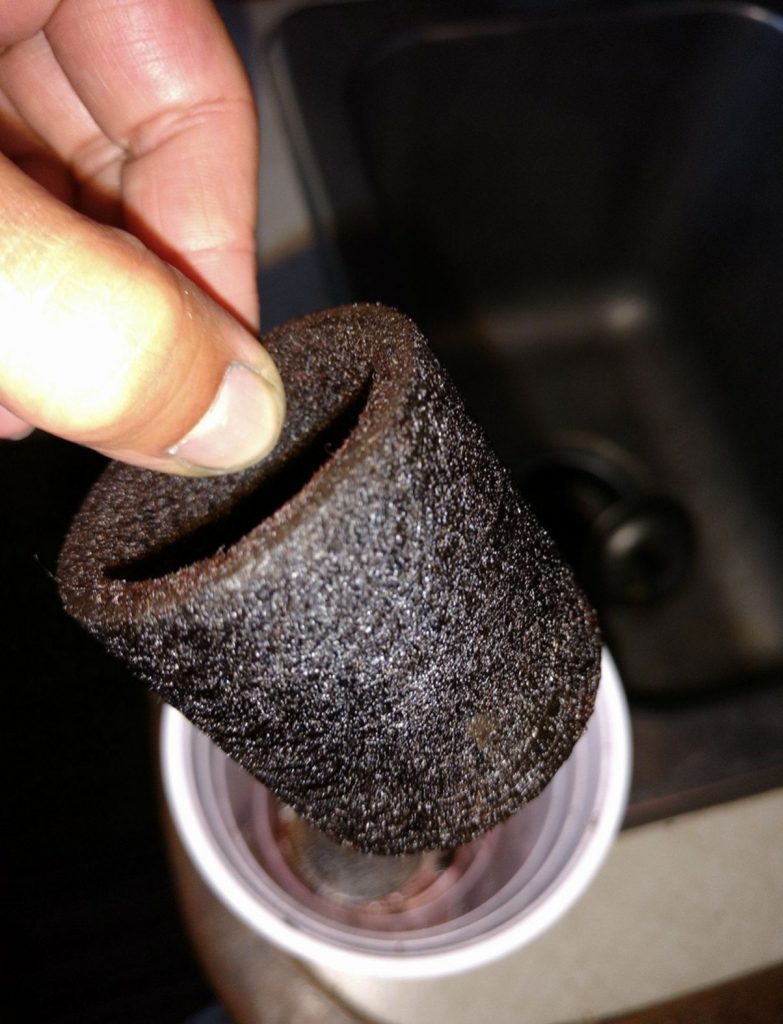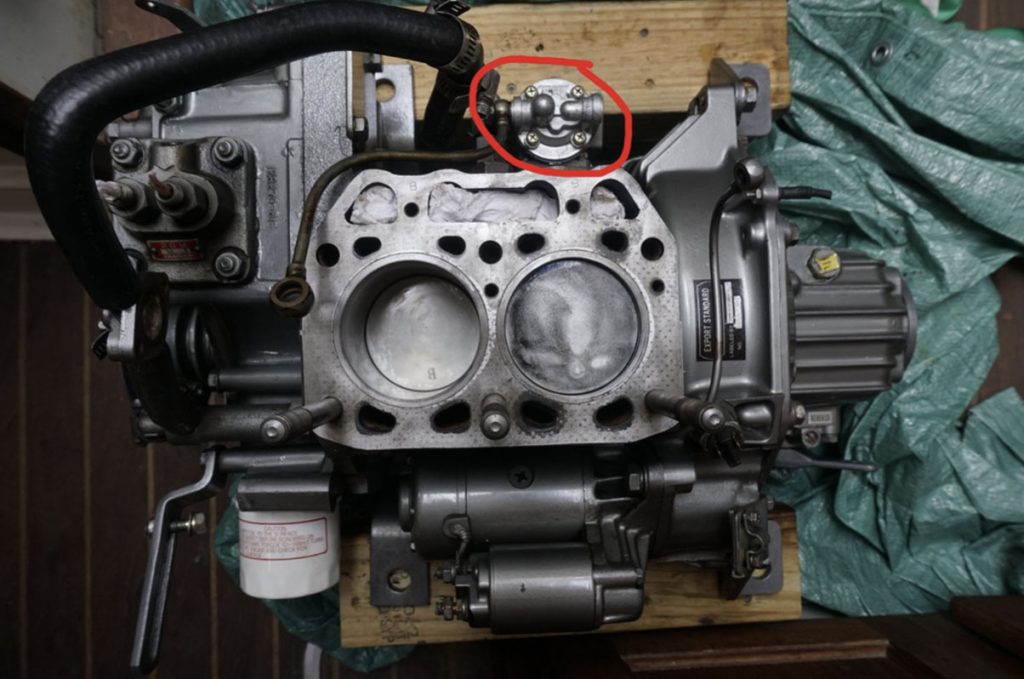
Does changing your own fuel filters sound like a little too much to handle?
This guide will walk you through replacing fuel filters and bleeding the fuel system of air on a diesel engine. Your engine manual will likely have a great guide as well as every engine might have its own differences in layout and procedures. We have a Yanmar 2GM 13Hp which is raw water cooled. I hope to provide you with some tips you can try if you run into issues along the way.

Fuel Filter Replacement
Starting from the fuel tank and working back to the engine, if you have a fuel shut off at the tank, shut it off. After the primer ball (if installed) there should be a water separator (RACOR) filter before the fuel goes to the lift pump. Then onto your primary filter mounted on the engine. Both filters need to be changed as part of your maintenance routine. Check your engines manual for details. The water separator has a screw underneath to drain out water if it gets into your fuel. Unscrew the screw to get fuel out of the water separator while using a cup to catch the fuel. After removing the screw and removing the fuel you can unscrew the top cap to get at the filter. Replace the fuel filter and if you do not have a priming ball or electric priming pump add some fresh fuel to the water separator to make priming easier later. Make sure the screw on the bottom is tight before adding fuel and closing the cap.
The primary fuel filter can be a little more messy but a container below helps catch any fuel spillage. Usually a large nut around the filter housing is unscrewed which allows you enough room to slide down the housing (careful it’s full of fuel) and pull out the filter. With a container underneath you can remove and replace the filter with minimal mess. If housing looks clean leaving at least some of the fuel in the housing will make priming easier. Getting the new filter back on can be tricky if the housing was mounted without clearance to remove it. Hold the filter inside the housing while getting into position to reinstall and push the filter into position on the engine. Then slide the housing back over it and screw it back down hand tight.

Fuel System Bleed
Removing the air from the fuel system is required to get the engine running again. First make sure you turn back on the fuel. Check for leaks at the water separator. If you have a primer ball squeeze until it gets harder to squeeze. Your fuel system should have some bleed screws installed in some key locations. The primary fuel filter has one on top of the housing and there’s one on the fuel line connector at the injector timing pump. Unscrew the bleed screw on the top of the primary fuel filter a half turn. Then use a small lever on the lift pump mounted on the engine. It should be before the primary filter. It can take some time but between using the primer ball and the small lever you should see bubbles coming out of the bleed screw. Keep pumping until the bubbles stop and you see only fuel coming out. A rag around the bleed screw helps minimise the mess. Tighten the screw and loosen the next screw at the injector pump. Do the same here, pump until you can see the fuel then close the screw. Careful to not tighten the bleed screws too tight as they strip easily. If it leaks when running then it needs to be tighter or replaced. For our engine, a Yanmar 2GM 13Hp, normally that’s enough. You can just turn the key and she fires right up. But if you are sure you have fuel at the injector pump free of bubbles and it still won’t start you can also try to loosen the nut on the top of one of the injectors and turn over the engine for a second. Check for fuel at the injector to make sure fuel has made it all the way to the engine. If only fuel is coming out of the injectors and it still won’t start, just go back over everything you did. Remember it ran before the filter change. If you find any leaks in your lines, bleed screws and filters then air could be coming in as well.

**Circled is the lift pump
Extra tips
-If you aren’t sure if all the bubbles are gone just keep pumping.
-Keep lots of rags or paper towels around as it can be messy.
-Dawn dish soap works well at removing the smell of diesel from your hands.
Hopefully this article will help you get your vessel back out on the water a little faster after a fuel filter change. For more details on a lot of other engine topics check out our videos on our Yanmar Playlist on our channel.
Cory Bertrand
Cory and Alex share their adventure with weekly videos on their YouTube channel “Wildly Intrepid Sailing” and share stories on their website www.wildlyintrepid.com . Their dream is to travel the world and to live without any regrets.
